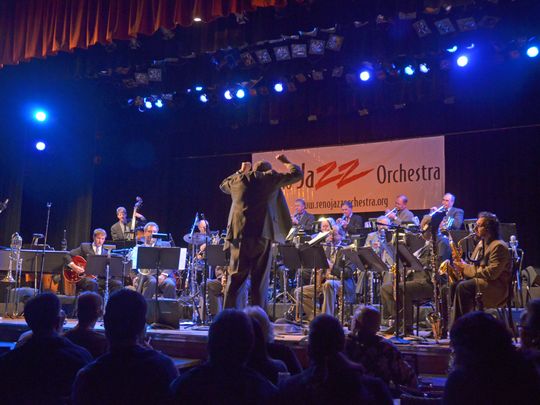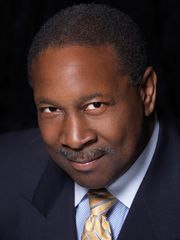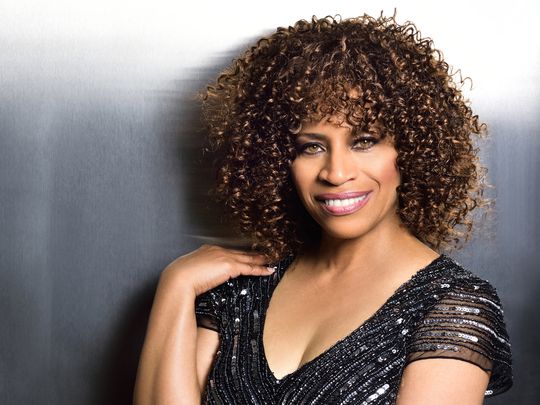
The Reno Jazz Orchestra (Photo: Provided by Reno Jazz Orchestra)
Jazz is a great American original embraced by the world, but where do jazz musicians get their inspiration? The Great American Songbook, of course. So what is the songbook, where did it come from, and can I check it out of the library? Well, many writers have attempted to document the Great American Songbook, including Alec Wilder's "American Popular Song: The Great Innovators, 1900-1950," but none have been able to clearly define what songs reside there — and I think for good reason. As with jazz, great songs come from many sources and continue to evolve as music itself changes.
Let's start where the first pages of the songbook were composed and that would be, as many attribute, Tin Pan Alley. It's a real place in New York City between Fifth and Sixth Avenue on 28th Street where music publishers set up shop starting about 1885. (There are many accounts of how it got its name, but my favorite is that there were so many pianos playing at the same time it sounded like the banging of tin pans.) Before albums, CDs, and the internet there was sheet music, and songwriters would pitch their songs to these publishers in hopes of having them printed and sold. At the time, most homes had a piano with someone in the family who could read sheet music.
Music publishers employed "song pluggers": pianists and singers who would make their living demonstrating songs to help sheet music sales. The great George Gershwin, perhaps the greatest composer in the songbook, began his career as a song plugger. Fats Waller, Jerome Kern, Irving Berlin and Richard Rogers are only a few of a long list of great songwriters that became famous in Tin Pan Alley. A great song needs a great singer to bring it to life, and the likes of Ella Fitzgerald, Fred Astaire, Judy Garland, and the greatest purveyor of the songbook, Frank Sinatra, inducted these great songs into the songbook through their masterful interpretations.
This continued until the mid-1950s when the business changed. What happened? Most attribute rock and roll as the culprit as most rock groups wrote their own songs and did not rely on Tin Pan Alley. Of course, technology also was a factor. With the popularity of recorded music, sheet music was no longer the big moneymaker.

Many say that was when the last page of the songbook was written, but I disagree. When one door closes, another always opens; today, great songs are inducted into the songbook though a different path. Singer-songwriters such as Stevie Wonder, Brian Wilson, Carole King and Willie Nelson earned their way into the songbook through their own performances. Broadway shows have always been a source from the earliest days and it continues with Rent, Hamilton, and even Hair. Movies are still a vital source enriching the songbook, as well as recording studios such as Motown and Stax. In the '60s studio musicians such as the Wrecking Crew in L.A. helped to keep the songbook vibrant.
(Photo of Jamie Davis - photo provided by Reno Jazz Orchestra)
Want to hear the songbook come to life firsthand? Join the Reno Jazz Orchestra as we offer "Music of the Masters" this Labor Day weekend, Sept. 2 at the Hawkins Amphitheater in Bartley Ranch and Sept. 3 at Sand Harbor Amphitheater. Joining us are two voices whose passion for the craft of song keeps the Great American Songbook alive and well. Jamie Davis' compellingly full, deep baritone voice paired with Clairdee will enchant you with her lustrous voice and soulful delivery of unforgettable songs.
Jamie Davis has been described as a fine wine which has stood the test of time, constantly innovating jazz classics, "rolling out" the blues and performing with one foot in the past and the other in today. The year 2000 brought exhilarating performances with The Count Basie Orchestra. Davis reflects, "Having all that sound behind you is just amazing. You've got to ride that current." Many of you may recall the RJO had the pleasure of featuring Jamie a few years ago in a tribute to Count Basie. He was such a joy, we knew we had to bring him back.

(Photo of Clairdee - photo provided by Dimitry Loiseau)
Clairdee is an international touring artist in her own right, playing to sold-out houses and garnering rave reviews. In addition to leading her world-class band, she performs with symphony pops orchestras and big bands, and has worked with acclaimed musicians from Bucky Pizzarelli to Boz Scaggs and has opened for numerous artists as diverse as David Sanborn and the Count Basie Orchestra.
I almost forgot to mention the orchestra! If you saw us July 30 for our Artown performance of Such Sweet Thunder, a tribute to the great Duke Ellington, you know the energy and excellence the RJO brings to each performance. It is an honor and a joy to direct this group of "masters of music" in their own right.
Chuck Reider is the President of the Reno Jazz Orchestra.
To learn more about the artists and upcoming performances, visit http://renojazzorchestra.org, http://laketahoeshakespeare.com, http://www.clairdee.com and http://www.jamiedavis.com.
This article appeared on the Reno Gazette-Journal, August 25, 2016 under the title, "The Great American Songbook: Music of the Masters this Labor Day weekend."

